|
LISTEN TO THIS THE AFRICANA VOICE ARTICLE NOW
Getting your Trinity Audio player ready...
|
If Yosemite National Park is not on your bucket list as a place to visit, it’s time to review and add it pronto.
Note: visit the National Park Service (NPS) website before visiting for the most updated information about the park’s condition. Dude the current weather conditions, NPS has announced the closure of the park through March 12 and possibly longer.
Click here to read the details.
Yosemite (pronounced yo-say-miti) is a true wonder of nature, located in the heart of California’s Sierra Nevada mountains. Spanning over 1,200 square miles, Yosemite offers a breathtaking mix of towering granite cliffs, stunning waterfalls, and lush forests that have captured visitors’ imaginations for generations.
Glacier Point is one of the park’s most iconic destinations, a lookout point that offers panoramic views of the entire Yosemite Valley. Visitors can take in the breathtaking scenery of Half Dome, Yosemite Falls, and the surrounding mountains from this vantage point. The view from Glacier Point is awe-inspiring, and it’s no wonder why so many visitors prioritize seeing during their time in the park.
Another must-see destination in Yosemite is Bridal Veil Falls. This 620-foot waterfall is one of the most popular in the park, and for a good reason. The water cascades down a sheer granite cliff, creating a misty spray that sparkles in the sunlight. Visitors can hike to the base of the falls for an up-close view or enjoy the view from a distance on the park’s numerous trails.
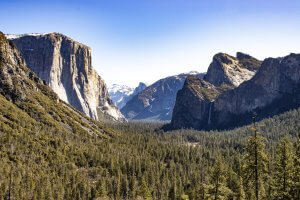
A visit to Yosemite would only be complete with a glimpse of El Capitan. This towering granite monolith is a favorite of rock climbers worldwide. El Capitan is one of the largest granite cliffs in the world, rising 3,000 feet above the valley floor.
Its sheer size and impressive features make it an unforgettable sight for everyone.
One of the most popular viewpoints in Yosemite Valley is the Tunnel View, which offers a stunning panoramic view of the valley. The viewpoint is located at the east end of the Wawona Tunnel on Highway 41, and is easily accessible by car.
From the Tunnel View, visitors can see some of Yosemite’s most iconic landmarks, including El Capitan, Half Dome, and Bridalveil Fall. The view is especially impressive during sunrise and sunset when the colors of the sky and landscape create a breathtaking scene.
Beyond these iconic landmarks, Yosemite also offers countless scenic vistas and natural wonders that will leave visitors in awe.
The Yosemite Valley, for example, is home to towering cliffs, lush forests, and the meandering Merced River, creating a postcard-perfect landscape that’s simply breathtaking. Whether hiking the park’s many trails, camping under the stars, or simply taking in the view from a scenic overlook, there’s no shortage of natural wonders to explore in Yosemite.
Experience Yosemite Live From Home
People who might not be able to visit Yosemite can experience the park virtually through the webcams perched on various strategic positions in the park. The webcams provide a live view of several attractions including El Capitan, Half Dome and the Sierra Nevada mountains.
More about Glacier Point
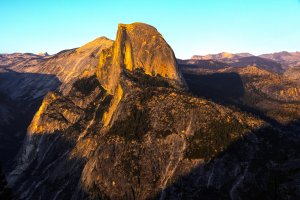
Glacier Point is one of the most iconic destinations in Yosemite National Park, in the heart of California’s Sierra Nevada mountains. This lookout point offers panoramic views of the entire Yosemite Valley, making it a must-see for visitors.
At an elevation of 7,214 feet, Glacier Point is one of the highest points in Yosemite, offering sweeping vistas of the park’s most famous landmarks, including Half Dome, Yosemite Falls, and the Merced River. The view from Glacier Point is breathtaking, and visitors can spend hours taking in the scenery, snapping photos, and simply marveling at the park’s natural beauty.
One of the best things about Glacier Point is that it’s accessible to visitors of all ages and abilities. Visitors can take in the stunning views without navigating steep or challenging terrain. The lookout point is easily reached by car or bus, with a parking lot just a short walk from the viewing area.
For those who are looking for a bit more adventure, there are plenty of hiking trails that lead to Glacier Point. The Four Mile Trail, for example, is a strenuous but rewarding hike that takes visitors from Yosemite Valley to Glacier Point, offering stunning views along the way. The Panorama Trail is another popular option, offering views of Yosemite Falls, Half Dome, and Glacier Point.
In addition to its stunning views, Glacier Point is also home to several amenities that make it a comfortable and convenient place to visit. There is a gift shop and snack bar located at the lookout point, as well as restrooms and picnic tables for those who want to enjoy a meal with a view.
The Majestic El Capitan
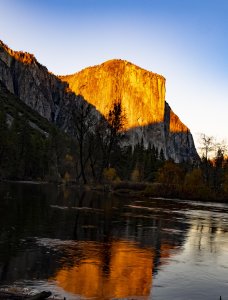
El Capitan is one of the most iconic landmarks in Yosemite National Park, known worldwide for its towering granite face and challenging climbing routes. Rising 3,000 feet above the valley floor, this massive rock formation is a sight to behold and a favorite of rock climbers and nature enthusiasts from around the world.
While climbing El Capitan is an adventure reserved for only the most skilled and experienced climbers, there are plenty of opportunities to hike around the base of the formation and take in the stunning scenery.
The El Capitan Trail is a popular hiking route that takes visitors from the valley floor to a viewpoint at the base of the rock, offering stunning views of the granite face and the surrounding landscape.
The hike to the base of El Capitan is moderate in difficulty, covering about 3.5 miles roundtrip with an elevation gain of approximately 500 feet. Along the way, hikers will pass through towering pine trees, lush meadows, and babbling brooks, making it a scenic and enjoyable hike for nature enthusiasts of all ages.
For those looking for a bit more of a challenge, there are also opportunities to hike to the top of El Capitan. The climb is not for the faint of heart, however, as it requires technical climbing skills and experience. Those who are up for the challenge, however, will be rewarded with stunning views of Yosemite Valley and the surrounding mountains.
For those who want to experience El Capitan without actually climbing or hiking the rock, there are plenty of other ways to take in the scenery. Visitors can drive or bike along the El Capitan Meadow Road, which offers stunning views of the rock and the surrounding meadows.
Additionally, several viewpoints throughout the park offer panoramic views of El Capitan and the surrounding landscape.
El Capitan is a must-see destination for anyone traveling to Yosemite National Park.
The Man who conquered the El Capitan without ropes
In 2017, professional rock climber Alex Honnold achieved one of the most impressive feats in the history of rock climbing by free soloing El Capitan without ropes or other safety equipment.
Free soloing refers to the practice of climbing without a rope or any protective gear, relying solely on the climber’s skill and strength.
Honnold’s free solo climb of El Capitan, which he completed in just under four hours, was a historic achievement that captured the attention of the climbing community and the world.
The climb, which required Honnold to navigate some of the rock face’s most challenging and dangerous sections, was considered one of the most outstanding athletic achievements ever.
Despite the inherent risks of free soloing, Honnold had spent years preparing for the climb, meticulously studying the rock face and practicing his techniques on other, less challenging climbs.
His successful ascent of El Capitan without ropes was a testament to his unparalleled skill and mental toughness and has inspired countless others to push the limits of what is possible in rock climbing.
The Stunning Bridal Veil Falls
Bridal Veil Falls is one of the most iconic waterfalls in Yosemite National Park, known for its delicate, lacy appearance and misty spray. The falls are so named because their flowing water creates a veil-like effect that resembles a bride’s veil.
In the late winter and early spring, when snowmelt is at its peak, Bridal Veil Falls can be especially impressive, with a high volume of water cascading down the granite cliff. The falls are also a popular destination during the park’s annual “fire fall” season, which occurs in mid- to late-February when the sun’s angle is just right to create a stunning visual effect.
During the fire fall season, the setting sun illuminates the falls with a warm orange glow, creating a spectacle that looks like a stream of fire cascading down the cliff.
This natural phenomenon draws thousands of visitors to the park each year, who gather to witness the stunning display.
The fire fall effect is caused by a combination of factors, including the angle of the sun’s rays and the reflective properties of the granite cliff behind the falls. As the sun sets, its rays hit the falls at just the right angle to create a fiery glow, lasting only a few minutes before fading into darkness.
While the fire fall season is a popular time to visit Bridal Veil Falls, the waterfall is a beautiful destination throughout the year. In the summer and fall, visitors can take in the stunning views of the surrounding landscape and enjoy the misty spray from the falls. In the winter, the falls can freeze over, creating a unique and breathtaking icy spectacle.
Note: Yosemite is also home to countless waterfalls.
The Half Dome
Half Dome is one of the most iconic landmarks in Yosemite National Park, known worldwide for its towering granite face and challenging hiking trails. Rising 4,737 feet above sea level, Half Dome is a massive rock formation that offers stunning views of the surrounding landscape and attracts thousands of visitors to the park each year.
One of the most popular ways to experience Half Dome is to hike to its summit via the Half Dome Trail. This trail covers a distance of approximately 16 miles roundtrip, with an elevation gain of nearly 5,000 feet.
The trail is considered to be strenuous and requires hikers to navigate steep switchbacks and exposed cliff edges. The final ascent to the summit of Half Dome is particularly challenging, requiring hikers to climb a steep cable ladder installed to assist with the rise.
From the top of Half Dome, hikers are treated to stunning panoramic views of Yosemite Valley and the surrounding mountains. The climb is not for the faint of heart, but the reward of reaching the summit is well worth the effort.
For those who are not up for the challenge of hiking to the summit of Half Dome, there are still plenty of opportunities to experience this iconic landmark. The view from the valley floor is equally stunning, with Half Dome’s towering granite face dominating the landscape.
Visitors can also take in the views from several lookout points throughout the park, including Glacier Point and Yosemite Valley.
One unique way to experience Half Dome is to view it at night during a full moon. The park offers special guided hikes during full moons that take visitors to the summit of Half Dome, where they can enjoy stunning views of the moonlit landscape.
Which one is easier to climb? Half Dome of The El Capitan
Some visitors confuse the two colossi putting them in the same category when considering the climbing difficulty. But there’s a huge difference.
While both El Capitan and Half Dome are iconic rock formations in Yosemite National Park, they are very different in terms of their climbing difficulty. El Capitan is generally considered to be more difficult to climb than Half Dome.
El Capitan is one of the world’s most challenging rock formations to climb and requires advanced technical skills and experience.
The granite monolith rises 3,000 feet above the valley floor and features sheer cliff faces, overhangs, and challenging routes that require a high level of physical fitness and climbing expertise.
In contrast, Half Dome is generally considered a more moderate climb.
While the hike to the summit via the Half Dome Trail is strenuous and requires hikers to navigate steep switchbacks and exposed cliff edges, the climb does not require advanced technical skills or climbing equipment.
The final ascent to the summit via the cable ladder can be challenging but requires a different level of experience than climbing El Capitan.
Mirror Lake
Yosemite’s Mirror Lake is one of the most beautiful and picturesque destinations in Yosemite Park, known for its crystal-clear waters and stunning views of the surrounding landscape.
Located in the eastern section of Yosemite Valley, Mirror Lake offers a peaceful respite from the hustle and bustle of the more crowded areas of the park.
The lake is so named because of its mirror-like reflection of the surrounding mountains and trees, creating a stunning visual effect that will take your breath away.
The lake is fed by Tenaya Creek, which flows down from the surrounding mountains and provides a steady supply of fresh water.
While Mirror Lake is a relatively easy destination to access, it requires a bit of effort.
The trailhead for Mirror Lake is located near the shuttle bus stop at the eastern end of Yosemite Valley. From there, hikers must follow a relatively easy, paved trail for approximately 1.5 miles to reach the lake.
The trail offers stunning views of the surrounding landscape, including the towering granite cliffs of Half Dome and Mount Watkins.
During the summer, Mirror Lake can be a popular destination for visitors to the park, so it’s best to plan your visit accordingly. If you’re looking for a quieter experience, consider visiting the lake during the off-season or early in the morning before the crowds arrive.
In addition to its stunning natural beauty, Mirror Lake is a popular destination for outdoor activities, including swimming, fishing, and picnicking.
The calm, clear waters of the lake are perfect for a refreshing swim on a hot summer day, while the surrounding meadows offer ample space for a relaxing picnic.
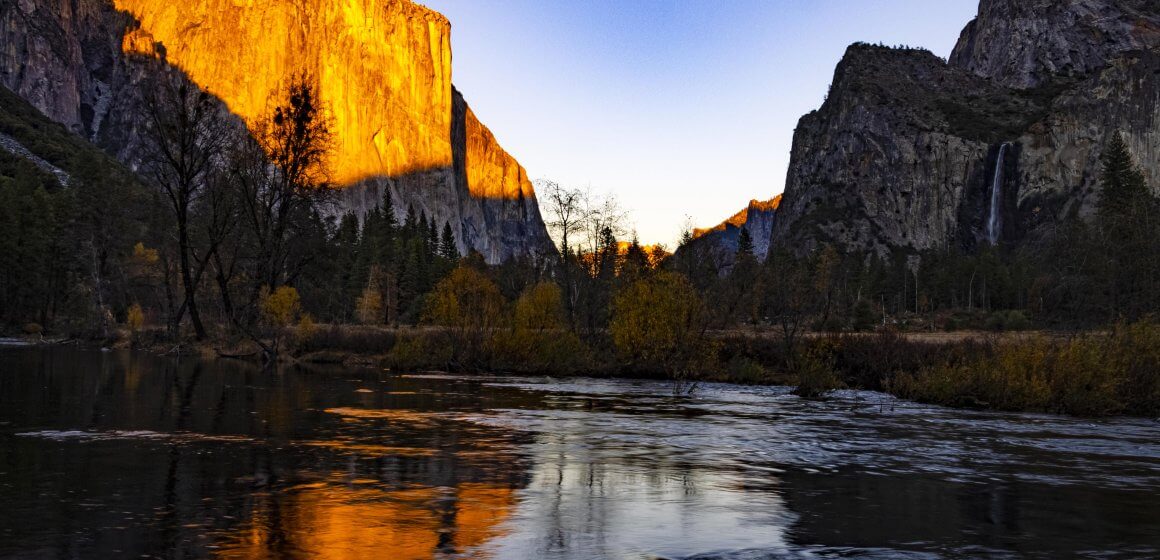

























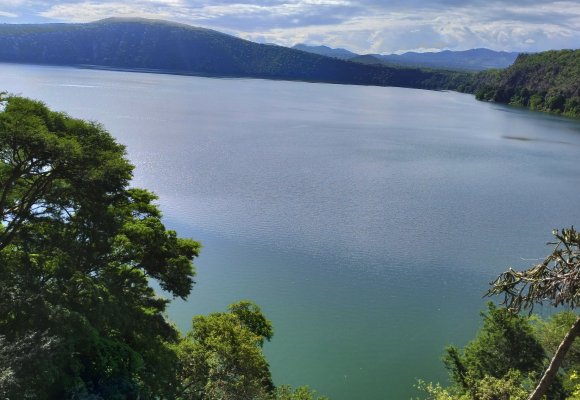

LEAVE A COMMENT
You must be logged in to post a comment.